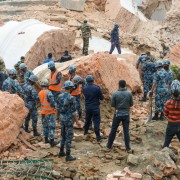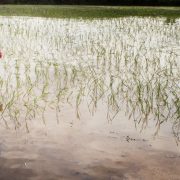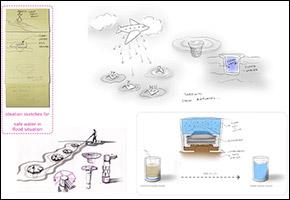Swelling Glacial Lakes and Everest

Almost two decades after the last field study in the Himalayas, scientists in Nepal are once again on the ground filling the gaps in the Himalayan glacier melt data.
Researchers at the International Center for Integrated Mountain Development (ICIMOD) and a number of government agencies completed the first of a series of visits to the mountain, in hopes of understanding the effects of global warming on the glacial lakes, the BBC reported Wednesday.
Last month the scientists completed their first field visit to Imja Lake in Nepal. They plan to extend their studies to other Hindu Kush Himalayan countries, said Arun Bhakta Shrestha, an ICIMOD climate change specialist. In the past, climate change researchers in the Himalayas relied primarily on satellite imagery and computer simulations.
The researchers collected data about the changes in Imja’s volume and surface area as their first case study. The researchers hope to use the data to better understand the flash floods that occur when swelling lakes fueled by melting glaciers burst.
Nestled among the hulking mountains in the Everest region, Imja appears to be getting bigger, but scientists still have to wait before they make their final conclusions about flood threat.
“The area of the lake has become bigger, and there are some changes in its end moraines [accumulations of debris],” said Pradeep Mool, a remote sensing specialist with the ICIMOD. “I would not call it alarming.”
Others, such as the Sherpa mountaineers in the region, are already warning about the potential hazards of melting snow pack. In May, for example, Apa Sherpa climbed Mount Everest for a record 19th time in an expedition that highlighted the dire consequences of climate change.
“I was shocked to see fresh water at that altitude, where I had seen nothing but ice and snow before,” he said.
While glacial lakes might be moving closer to their breaching points in areas that have already suffered from similar floods in the past, glacial melt itself might have more dire long-term consequences. According to scientists, as glaciers retreat, they will stop feeding many of the major rivers of Asia, such as the Ganges, the Indus, the Bramhaputra and the Meghna. As snow reservoirs run out at an alarming rate, millions of people dependent on glacial water could be affected.
Read more here.

, a Bulgaria native, is a Chicago-based reporter for Circle of Blue. She co-writes The Stream, a daily digest of international water news trends.
Interests: Europe, China, Environmental Policy, International Security.









Leave a Reply
Want to join the discussion?Feel free to contribute!